
Lollipop Magazine
Founder & Editor in Chief: Joshua Paul
Heidi: Was it your intention to be a Formula 1 photographer?
Joshua: I never intended to be a Formula 1 photographer, editor or publisher of a magazine. There was no concept, savings, or business plan, just a perfect sequence of events, dating back to childhood that brought this to fruition. I was born with innate love of cars and racing, specifically grand prix racing. I also subscribed to Road & Track magazine for as long as I can remember. As a photographer, I have been sent to over 85 countries, on some very dodgy shoots, traveling so frequently, I used to pre-pack my bags for subsequent trips. Lollipop couldn’t have happened more organically – Formula 1 brings together my love of cars, racing, travel, adventure, photography, and magazines.
How did the project get it’s start?
On a freezing day in February of 2013, I woke up to KCRW, and heard about an upcoming music festival in Barcelona, called Primavera Sound, with Blur as the headlining band. I spontaneously bought a ticket, and booked a flight and room for the month of May.Over the next few weeks, realizing the Spanish Grand Prix would take place during my trip, I asked my friend and the new Creative Director at Road & Track, Dave Speranza, if I could shoot the race for them. They were into it, and helped me attain accreditation for the Spanish Grand Prix.
I didn’t see this as anything more than fulfilling a dream to shoot a Formula 1 race, before the concert the following weekend. I was psyched to be there, and nostalgic to be shooting for Road & Track. When I arrived at the circuit in Barcelona, the first person I saw was the NBC broadcaster, Will Buxton. I said hello, and with a very warm welcome, he encouraged me to introduce myself to the person who gave me accreditation, Pat Behar, and insisted I go to the Ferrari, Mercedes, Lotus and McLaren motorhomes, ask for the Press Officers, and tell them I’m with Road & Track, and ask if I can photograph the drivers, the cars, the garages, etc. I immediately went to say hello and thank you to Mr. Behar, who not only knew my name, but he knew my website thoroughly, referencing specific images, telling me, “That’s why I gave you accreditation.” Then he offered, “You should come to Monaco,” the next race on the calendar. Then I went to Ferrari and Lotus, and they too generously offered to let me shoot the drivers getting suited up in the garages, buckled into the cars, and speeding off onto the track. That night, I called a friend back in New York to tell them what the hell had just happened, and his response was, “Dude, you’re in.” I didn’t feel that way at all, but knew something special was happening, I accepted the invitation to Monaco, sacrificing my Blur concert.
Did you have a previous relationship with Road and Track?
Not as a photographer, but as a long-time subscriber, since I was about twleve years old. My connection was through the Creative Director, Dave Speranza, who gave me one of my first assignments, for “Golf for Women” magazine, in 1999.
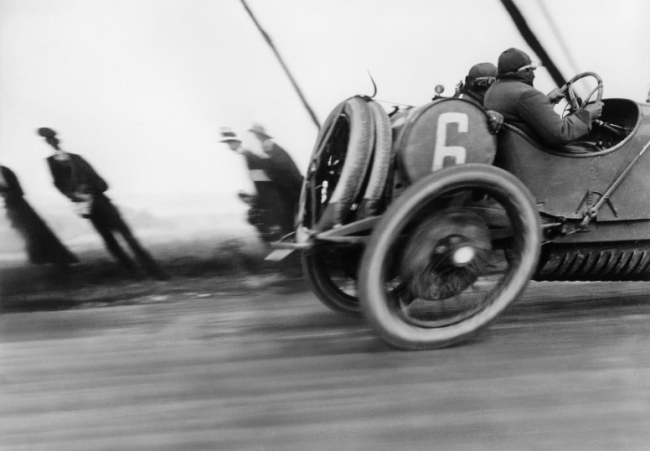
What was it specifically in this image by Jacques-Henri-Lartigue that inspired the project?
I love everything about this image! It looks fast, dangerous and romantic. The drivers are wearing leather helmets, there is an exposed gas tank behind the driver’s heads, and the wheels are bent to an oval, with two spare tires, suggesting there will be a flat tire. The people in the background look upper class, which hasn’t changed in F1 racing, and they are skewed in the opposite direction of the car, emphasizing speed. It’s also muddy, and I feel like I can hear the engine and smell the fuel. Mostly, what intrigues me about this image is the odd crop. I so badly want to see the whole car, but it’s as if this was all he could capture at that speed. He leaves me craving more. I’ve always wanted to create timeless images, and I’m trying to do it in F1.
I know self publishing is a challenge, what was your driving force?
After Road & Track told me they could no longer sponsor my accreditation, an idea arose to publish an independent, American Formula 1 magazine, as a photo-narrative of every race. Most F1 magazines report news, driver gossip and the business deals. To stay in Formula 1 as a photographer, you must attend 12-14 races each season, and publish hundreds of photographs. Lollipop helped achieve some of these requirements, but I had no idea how intense the travel would be. There are twenty races in twenty different countries, taking place every other weekend, from March until November! Had I known in advance what this would take, I’m not sure I would have done it, but taking it race by race was exciting and achievable. I kept discovering new things about the sport, uncovering different layers, and I woke up every morning totally inspired to go explore, shoot something new, play with shutter speeds, etc. The more races I shot, the more I discovered, and realized I had access to not only the race track, the cars and drivers, but also with permission, to the team garages, the mechanics, engineers, teams trucks, and factories. There is so much to shoot – it’s the ultimate travel story.
Where did the funding come from Lollipop and what’s the backstory on the name?
Lollipop is self-funded. I looked for sponsors and advertising, but Formula 1 is not well known in the United States, and there was no circulation to speak of. I took a loan for the printing of the third issue, but the sales are offsetting the costs, and inherent expenses. The name Lollipop pays homage to a piece of racing equipment formerly used during pit stops. The crew chief held a long pole with a disc at the end of it, affectionately called the lollipop. It was used to communicate with the driver of when to stop, and when to go. Now they are electronic, like stop lights.
Why is there no video allowed in F1?
The rights holder of Formula 1 owns the broadcasting rights worldwide. He provides a live feed of each race, bringing all the cameras, microphones and cameramen around the world, from race to race. We are only allowed to shoot still frames, which is amazing for me, because I love the still image and narrative.
You’ve traveled to 22 races and been to 40/50 countries, are you also shooting other jobs?
I have taken a few races off here and there, to regroup and shoot other assignments. It’s more a matter of letting my clients know I’m back in the United States. This is where social media sometimes backfires. If I post images from around the world, everyone assumes I’m gone, so I need to be careful about that. I also keep in touch and let everyone know I’m back – this goes for friends too. I’m grateful that they have been patient with me, and still call. As far as shooting assignments, I would like to concentrate on motorsports and the automobile industry. I would also like to see Lollipop expand to different genres of prestigious racing, like LeMans. I am enjoying the challenge, and as much as I love being a photographer, I love every aspect of publishing, it’s exciting, empowering and new.
How many different cameras do you have for each race?
I bring one camera, and sometimes a backup body. I’m not a gear head and don’t like carrying all the weight. I also like to choose a focal length and stick with it. If I can do this from race to race, mixing it up a bit, it keeps me fresh, the work fresh, and gives a different look to each race. More important than the camera, I shoot with fixed focal length lenses. I bring a Zeiss 35mm, 50mm, and a vintage Nikon 105mm, along with an autofocus 24-70mm, as a back up for portraits. Both Nikon and Canon reps come to every race to service our gear, and bring crates of cameras and lenses for us to use. I occasionally try a long lens, but I prefer to shoot wide. Last season, as I started to repeat races from the year before, and decided to bring along my 1913 Graflex 4×5, and shoot black and white film. I wanted to try to recreate some classic images with modern cars, and deconstruct the cars a bit, concentrating more on their form, than the sometimes garish advertising. It’s a huge challenge, but keeps me intrigued, and really slows things down. Instead of shooting infinite frames on memory cards, I shoot about twenty sheet per session, and I feel like a photographer again, thinking about composition, framing, and point of view.
How are you sustaining yourself, does the magazine have advertising?
Lollipop is produced on a shoestring budget, with no overhead or employees. I’ve slept in tents, stayed in far away hotels, walked, taken public transportation and have asked for rides to and from the various circuits. Besides paying the designer, and expenses for the fashion shoot, all the money went into printing. That couldn’t be sacrificed, and we printed it based on the paper and ink we wanted, vs. cost. I have not taken any advertising, not that I didn’t try, but in the end, I am happy we didn’t get any ads, because I want Lollipop to be exclusive and collectible. I would like to think, if you picked up an issue ten years from now, you’d still say wow, and not be distracted by outdated ads. I know this is very idealistic, but I think it would be better to try to advertise by association, or by a single, per-issue sponsor, or through custom packaging. I also think and hope that when Lollipop is discovered by F1’s hundreds of millions of fans worldwide, the distribution will grow and help make it sustainable and profitable.
Are you selling any of there images?
I have supplied images to several magazines, but I decided I wanted to publish exclusive content, and simply try to create the most beautiful racing magazine ever.I would like to publish and exhibit the black and white work, and it’s a matter of time and priorities. I’m doing my best to set realistic goals, and unfortunately, it’s not an immediate goal.
What’s the greatest challenge with this project?
The biggest challenge was getting to that first race. Formula 1 has a bad reputation, based on how the sport was governed over a decade ago, but the people are incredible, and they are incredibly supportive. The challenges now are my stamina, and finding a financial solution to keep this going. A lot has been achieved in two years, including permanent accreditation. I believe in it, the response has been overwhelming, and I think money will come.
How have you grown from Lollipop?
If there was ever a more significant right of passage, this is it. I came to a point in my life to take a real risk, and stopped caring what anyone thought, or failing, and ignored any discouragement. After 17 years shooting professionally, I feel like I’ve finally found my voice as a photographer and writer. I feel more articulate, acute, and in the moment. It’s hard to explain, but it’s like having a new career, doing exactly what I love to do.
What would you tell other photographers that have a deep passion for a hobby or sport?
I have always been very encouraging and I say go for it! You have nothing to lose, and I think every day, if Lollipop stopped tomorrow, it was a huge success. Very few people take big risks in their lives, for fear of failure, lack of stability or peer pressure. Nothing has been easy for me, but I work hard and I’ve had a lot of luck! My first assignment was to shoot shampoo bottles and I was psyched! Then I shot a garden, and then a restaurant. It took three or four years before I got a big travel shoot, and even then I took a deep breath and thought, okay, that’s one, now let’s try for two. You have to believe in yourself, and not be discouraged. There is every reason to not try to be a photographer right now, or think it’s already been done. Everyone is a photographer today. We all have phones, but what do we do with them? Photography is about nuance, and if you look at Robert Frank’s, or Irving Penn’s contact sheets, you’ll quickly see this is a working process, and the great frames jump off the page.Before my first race, a friend asked, “Why F1? It’s already been done.” Not to me it hadn’t, not even close.
Are you also writing all the interviews?
Yes, and that’s empowering. I was an English major in the creative writing program at the University of Washington. I have always felt comfortable writing and have kept a journal for about fifteen years. But again, this happened by accident. One day the Press Officer from McLaren called and asked when I would like to interview their rookie driver, Kevin Magnussen. I thanked her, and explained that I was a photographer and more interested in taking his portrait. She kindly welcomed me to do both. I laid awake the night before, nervously thinking of questions to ask, and just went for it. It wasn’t the best, but it was a start, and it helped me get over being star-struck, and talking to the drivers. I had no idea how difficult it is to dictate an interview and make sense of it. It is really challenging, and massively rewarding. After that, I asked the other teams for interviews, and tried to approach the interviews a little differently. It got better, but drivers expect to hear questions about that weekend’s race, with the Press Officer by their side, so it’s hard to do a lifestyles piece. When I interviewed Pirelli Motorsports Director, Paul Hembery, I felt much more comfortable to just chat and listen. It felt more like we were sitting in a pub drinking a pint, with him telling me about his life. I learned a lot, especially that the most interesting people in Formula 1 are not necessarily the drivers.
How long does on issue take to produce?
I have learned so much in the last two years, and most of it the hard way, but that’s kind of my style.The third issue was a redesign, which took about six months from inception, with three months of hard work to finish. We missed our initial two deadlines, but benefitted by having more time to add written content, like an extra interview and an article about my camera repair with Lotus. Production took over four weeks, because our pages were so heavily coated in ink, it literally took three weeks for the paper to dry. I have to factor that in for the next issue. And then of course, shipping, which took a week. I hope the next one comes together much quicker, but then again, there is a lot of content to gather and the season is long. I want to mix up the design to continue to keep it fresh.

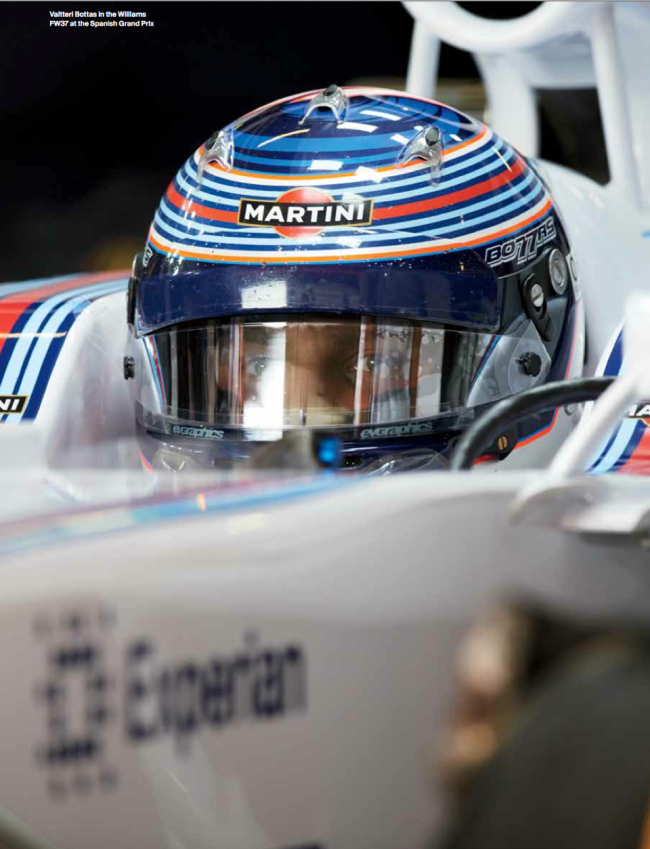
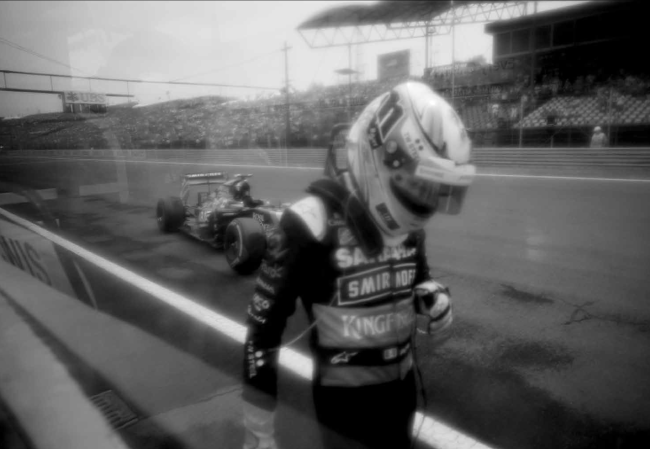
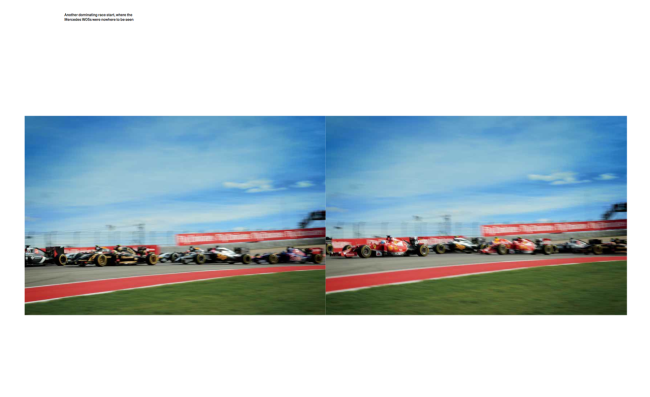
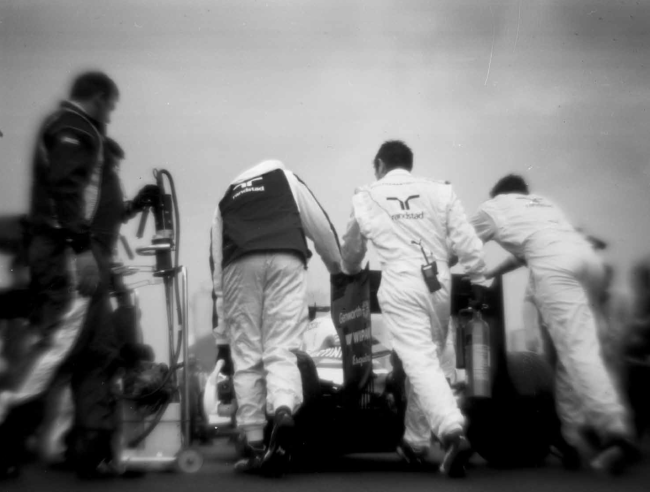
1 Comment
And how does one purchase a copy or a subscription to Lollipop?
Comments are closed for this article!